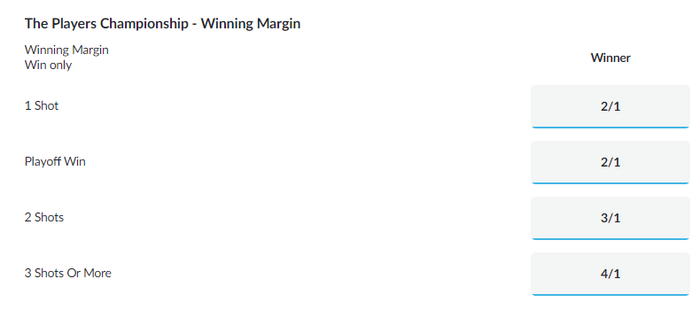 The vast majority of golf tournaments use the stroke play format in which whoever completes the round – or more normally in professional golf, four rounds – in the fewest shots, wins the tournament. When two or more players finish level after the allotted number of holes, a playoff ensues to determine the overall winner.
The vast majority of golf tournaments use the stroke play format in which whoever completes the round – or more normally in professional golf, four rounds – in the fewest shots, wins the tournament. When two or more players finish level after the allotted number of holes, a playoff ensues to determine the overall winner.
In this article, we take a closer look at how this form of golfing tiebreaker works. Playoffs may also be used in non-stroke play events and we will look at that too and whether there is any difference in the type of playoff used, whilst we will also take a look at some of the most exciting golf playoffs of all time.
When Do Playoffs Occur?

As said, a playoff is used to break a tie and whatever the format of the tournament, be it stroke play, match play or anything else, and whether it is a singles contest, pairs or team event, a playoff is used to separate players or teams who have finished level. When we talk about professional golf, we typically mean a standard stroke play event for solo competitors so it is this type of tournament we will consider first.
Let us imagine a hypothetical tournament in which Rory McIllroy and Dustin Johnson have both duked it out over four days and after Sunday’s final round they have finished at the top of the pile on 18 under par. Golf may be considered a gentile and sporting game but there is no way that these two fearsome competitors are going to accept sharing the trophy, six months each, and splitting the cheques for first and second place. In golf, there is always a winner and so, in this scenario, there will be a playoff.
Once the players’ scorecards have been checked and it is confirmed they have ended level, there is normally a very short break and then both golfers return to the course for a playoff.
Sudden Death
In the majority of tournaments, irrespective of format, the playoff is sudden death. By this we mean that scores are calculated on a hole by hole basis and as soon as one player is in the lead, they are declared the winner.
For all intents and purposes these are match play contests, though technically that is not the case, a point more obvious should there be more than two players involved in the playoff. If Rory makes a birdie three at the first playoff hole and DJ can only manage a par four, Rory has thus won the event. If they both make the same score, be that a birdie, par, triple bogey or whatever, they move onto the next playoff hole and the process repeats itself until one player wins.
Playoffs with Multiple Golfers
In a multi-player playoff, if any single player records the lowest score on a hole they will automatically win. Otherwise anyone shooting the joint lowest score stays in the hunt and moves onto the next hole and, as before, the process repeats itself. Let us imagine that Rory, DJ, Justin Rose and Jon Rahm had all finished level after 72 holes. If, at the first playoff hole, the first three golfers score a three but Rahm makes a two, then the Spaniard wins the tournament and the other three all finish tied for second. There is no further playoff to determine the other places in the same way that there is no playoff for golfers who finish tied for any position other than first after 72 holes.
However, if Rory, DJ and Rose all shoot three but Rahm can only make a four, then he is eliminated and the other three continue to the next hole. Perhaps they all make a four at that and so continue to a third playoff hole. If Rose makes a bogey but the other two make birdies, then Rory and DJ move on to a fourth playoff hole where things continue in the sudden death manner as described.
Match Play Playoffs
This type of playoff is also used in match play events, though these will only ever have two “players” (or teams or pairs). In this instance, the same format is used, though technically this will be a match play playoff.
In team events, such as the Ryder Cup or the Walker Cup, where an individual match finishes level after 18 holes (or more), it is often the case that there is no playoff and both sides simply receive half a point. There is no need for a playoff as the match is part of a wider contest, although some have suggested that introducing playoffs could make things more exciting.
What Holes Are Played?

In sudden death play-offs one might assume that players would play the course in its natural order, using the first hole first, then moving to the second and so on. However, this is rarely, if ever, the case. It might also be a fair assumption that which holes were used was standardised but again this is not the case.
Tournament organisers get to choose the holes that are used, as well as the format of the playoff (of which more below). Returning to the holes used, officials generally consider two factors when deciding how to structure the playoff: the logistics for fans and players, and what holes are likely to deliver an exciting contest.
The 18th hole is the most commonly used in playoffs at it tends to tick both boxes very well. Fans are already gathered at the hole at the end of an event and as the closing hole it often has a sizeable grandstand and good viewing areas. In addition, course designers often seek to make the 18th hole conducive to late jeopardy, either making it very difficult, open to birdies and eagles, or posing an interesting risk/reward challenge.
Indeed, some events rather boringly just put 18 on repeat, with golfers playing the last hole over and over until there is a winner. The ZOZO Championship and Tournament of Champions are two examples of such events. Others use a couple of holes, such as the WGC in Mexico, where the playoff involves players playing the 18th, then the 17th, then the 18th and then the 17th again until there is a winner (but still in a sudden death format). Yet others use a longer series of holes, often with the 18th featuring multiple times in the series. Hawaii’s Sony Open uses the following holes in a repeating sequence, with many other tournaments opting for a similar structure: 18, 18, 17, 18, 10, 17, 18. The Sanderson Farms Championship playoff sees players heading down the 18th, then the 18th again (if needed), then the first, just for a little variety and then the 18th, with the 18-18-1-18 cycle repeating if needed.
In short, the holes used vary, with events setting their own playoffs. These are usually sudden death, but tournaments use a cycle of holes that is repeated until there is a winner, the cycle ranging from a single hole (the 18th over and over), to up to six holes which may feature the same hole more than once (for example the Tour Championship playoff uses the 18th, 18th, 15th, 16th, 17th and 18th for its sequence).
Playoffs With Different Formats

Whilst different tournaments may use different holes, as we have said, the vast majority use the same format, that of winner-takes-all sudden death. However, some tournaments like to be a little bit different and do things their own way. The main alternative to a sudden death playoff is one played over a set number of extra holes where the cumulative total is used, in effect a mini stroke play tournament.
Sometimes called an aggregate playoff, this is actually the more traditional tiebreak method for a stroke play event. Indeed, all four of the game’s biggest prizes, the majors, originally used playoffs of at least 18 holes and sometimes even 36 holes in order to settle ties. As we will see, that has now changed entirely, although the US Masters is the only major that now uses an instant sudden death playoff.
It tends to be larger events that use aggregate playoffs because it is often thought unfair that the sport’s biggest prizes may be settled due to one bad shot in a decider. Three of the biggest tournaments to use this style of tiebreaker are held in the States. The US Open has used a two-hole playoff since 2018, the PGA Championship has a three-hole shootout, whilst the Players Championship, the unofficial fifth major, also uses a three-hole aggregate playoff. The other massive event to use a cumulative playoff is the Open Championship, where four holes are used.
US Open
The world was a very different place back in 1931 and the US Open was certainly a very different tournament. The prize fund was $6,000, the course yardage was a shade over 6,500 (what would Bryson have done to that?!) and the cut fell at +16. We also saw a rather remarkable playoff between American Billy Burke, who would win his only major, and compatriot George Von Elm, most famous for having a sparkling amateur career.
Incredibly, the playoff was as long as the tournament-proper, lasting a mammoth 72 holes! How so? Well, in those days the US Open used a 36-hole playoff to separate ties and, back when men were men and time was, presumably, plentiful, in the event of that 36 holes ending level, the players were sent back out for another 36!
After 144 holes incredibly there was just a shot between them, Burke landing the title. A lover of cigars, he reportedly got through 32 of them during the playoff! Let’s hope they weren’t too expensive or taking part may well have ended up costing him money!
Eighteen Hole Playoffs
The format of the US Open playoff has changed a number of times over the years but for a long period, it was an 18-hole shootout that would take place on the Monday following the tournament’s finish. If the players remained level after that, sudden death took over and such a scenario unfolded in 1990, 1994 and in 2008. Tiger Woods got the better of Rocco Mediate on the 91st hole that year and Woods is said to be an advocate of the aggregate playoff, believing they are more likely to yield a “fair” result, that is one that allows the best golfer to win.
Two Hole Playoffs
In 2018 the US Open switched to a two-hole playoff. Since then the new format has not been put to the test but it is believed it will prove far more popular with fans both at the course and on TV. In an era where attention spans are short and TV money calls the shots, it is easy to see why the change was made. The organisers said the holes used would not be fixed and would vary according to the course, not being restricted to just the 17th and 18th.
Players Championship
Another huge event that uses an aggregate system is the Players at TPC Sawgrass. This actually moved the other way, having been a sudden death decider until 2014, when it changed to a three-hole shootout. The brilliant last three holes are used for the decider, with sudden death then being held over the 17th and 18th (repeating) until there is a winner if the scores are level after the three holes.
PGA Championship
As with all of these historic tournaments that have been held back into the 1800s or early 1900s, the format has changed over the years. However, correct as of 2021, the PGA Championship has used a three-hole aggregate playoff. As with the Players, should things be level after that, we see sudden death introduced. Unlike the Players, which is always held at the same course, the PGA moves around the States, so the holes used vary according to the course.
Open Championship
The Open uses a similar system but the decider is pitched over four holes, reverting to sudden death should two or more players still be inseparable. As with the other aggregate playoffs discussed, this shootout takes place shortly after the 72 holes of the tournament, rather than the following day. Again, given the Open is held at a different course, the holes used for the playoff vary.
Until 1963 the Open had a 36-hole playoff but this was changed in 1964 to 18 holes. In 1985 that was reduced to the four-hole system we see today. The first time it was used came in 1989 when Mark Calcavecchia beat Aussie duo Greg Norman and Wayne Grady in a three-man, four-hole decider, the first of eight times the system has been used to date.
How Common Are Playoffs?

Playoffs are relatively rare but cannot really be described as unusual or hugely unexpected given we see a number of them each and every year on all the main tours. Indeed, if we look at the main PGA Tour, we have seen some seasons in which a relatively huge number of tournaments required a playoff.
In 2011-12, for example, a record 18 deciders were needed, with 17 used in 2014-15 and 16 playoffs taking place in both 1991 and 1988. Looking at some of the majors, we can see that there have been 21 playoffs in the Open Championship in the 149 tournaments up to and including 2021. That’s a playoff once every seven Championships, more or less.
At the US Open there have been far more, 33 in fact, from 121 tournaments, meaning one every 3.67 editions. This may support the argument, made earlier, that playoffs are more common when scoring is difficult. Or it may just be a coincidence and natural variance. If we look at the Masters, we see there have been 17 playoffs over the 85 editions of the iconic major (exactly one in five). As for the final major, the US PGA Championship, from the stroke play era of the tournament alone, there have been 13 playoffs needed, from a total of 64 editions, meaning that there has been a playoff just under one in five times.
Overall it is probably fair to say that the PGA Tour sees an average of around 10 playoffs per season. Whilst some campaigns have seen far more, occasionally we will see fewer and, of course, the same goes for the European Tour where playoffs occur with broadly the same frequency.
Betting On A Playoff

Related to the above, it is well worth noting that with many top golf betting sites you can bet on a tournament being decided by a playoff. The odds, as ever, vary between different bookmakers and depending on the tournament and the players involved. You may see the odds under the Winning Margin market, or under a binary Playoff: Yes/No one. Either way, as a general rule you can expect to see odds somewhere around the 3/1 or 4/1 mark if you want to back a tournament being decided by a playoff.
Interestingly, it is worth noting that some bookies offer both of the markets mentioned above but may have different odds for a playoff depending on the market you choose to opt for. Backing the winning margin to be “Playoff” is exactly the same as backing “Playoff: Yes” so it is worth checking if one has better odds than the other.
We have already looked at how often playoffs occur in general but if you want to bet on a specific tournament being settled by extra holes, then looking at past editions is certainly likely to be a good starting point. Sometimes whether or not a tournament goes to a playoff is simply a matter of chance. However, there are certainly some that seem to witness more tiebreakers than others. Factors such as the course, weather conditions and quality of the field can make a difference, and it is thought by some that more difficult courses, where scoring is harder, are more likely to result in a playoff being required.
Countback Common In Amateur Game

Countback is an alternative way in which tied players can be separated, though it is rarely, if ever, used in the pro game, certainly not in the modern era. However, in the amateur game, especially at club level, this is common. With countback, tied players are separated by looking at who shot the lowest score in the closing holes of an event.
In a multi-round tournament, this will start by looking at the final round but more typically it is used for 18-hole contests, in which case officials will look at who had the superior score over the last nine holes. If players remain tied they will then look at the last six holes, going down to three and one if needed.
Golf Playoffs Stats, Facts And Records
We have already detailed the longest ever playoff, the mammoth 72-holer at the US Open, but here are a few other playoff stories, facts and stats to pique your interest.
- Longest Sudden Death – the longest sudden death playoff cannot get near 72 holes but even so, Peter Thomson’s 14-hole playoff win over three other players at the 1976 Pepsi-Wilson Tournament must have been a serious test of nerves!
- 36 Holes At Masters – the first playoff at the Masters, now sudden death, was over 36 holes in 1935, with the legendary Gene Sarazen getting the better of the not-legendary Craig Wood.
- Who Needs Two Legs? – when Tiger Woods tied over 72 holes with Rocco Mediate at the 2008 US Open, a gruelling 18-hole playoff was the last thing he needed. Woods had previously suffered a double stress fracture on his tibia and was essentially playing on one leg. He would subsequently have knee surgery as well and missed the remainder of the season.
- Groundhog Day – in 2021 John Catlin and Maximilian Kieffer had to replay the 18th hole at the Austrian Open five times to settle the tournament. Tying on 14 under they went to a sudden death playoff that proved to be far from sudden and showed why many people question replaying the same hole over and over. They tied the 18th four times before Kieffer contrived to make a quintuple-bogey eight, handing the title to Catlin.
- Four Holes Too Many At 59 – Tom Watson made bogey at the last to drop into a playoff at the 2009 Open Championship. Par would have seen him become by far the oldest man to ever win a major but it was not to be. He went into a four-hole decider with compatriot Stewart Cink but perhaps fatigue showed as Watson completed the four holes in four over par to lose by six shots.
- No-Play Off – perhaps the easiest playoff victory came way back in 1876 when Bob Martin won the Open Championship after tying with Davie Strath at St Andrews. Strath refused to take part in the playoff for reasons that remain unclear so Martin was awarded the title.
- Six Is A Crowd – there is no theoretical limit to how many players could compete in a playoff but the record on the PGA Tour is currently six. That has occurred three times, most recently at the 2021 Wyndham Championship. You won’t often see a six-ball in pro golf but that’s what we saw, with Kevin Kisner eventually coming out on top.
- In It To Win It – four players have appeared in 12 PGA Tour playoffs but a long way ahead of them all is Tiger Woods. The legend of the game has appeared in 15, winning 11 and losing four.
- Back To Back Pain – in 2007 José Coceres had a fortnight to forget as he lost consecutive playoffs at the Mayakoba Golf Classic and the Honda Classic.
- Beat What’s In Front Of You – can you make a double bogey at a key moment and celebrate? Absolutely! At the 2001 Buick Invitational Phil Mickelson, in one of his 12 playoff appearances (to date), shot a double but still go the better of Frank Lickliter II.
